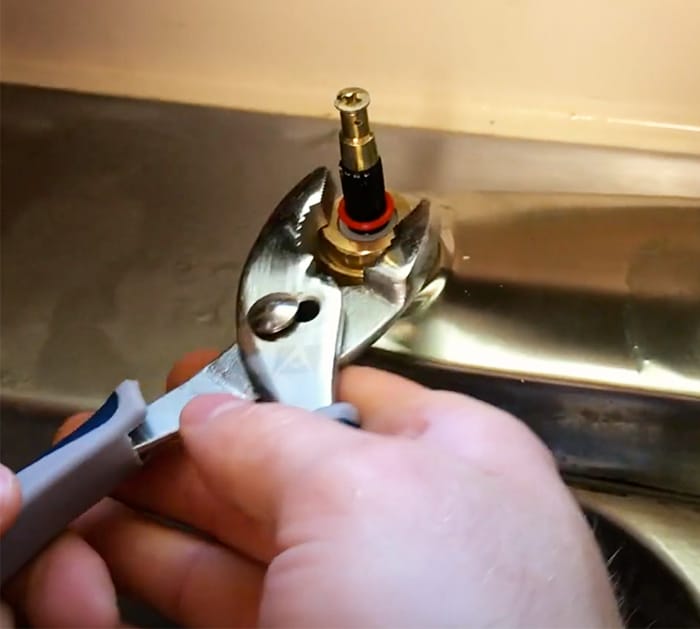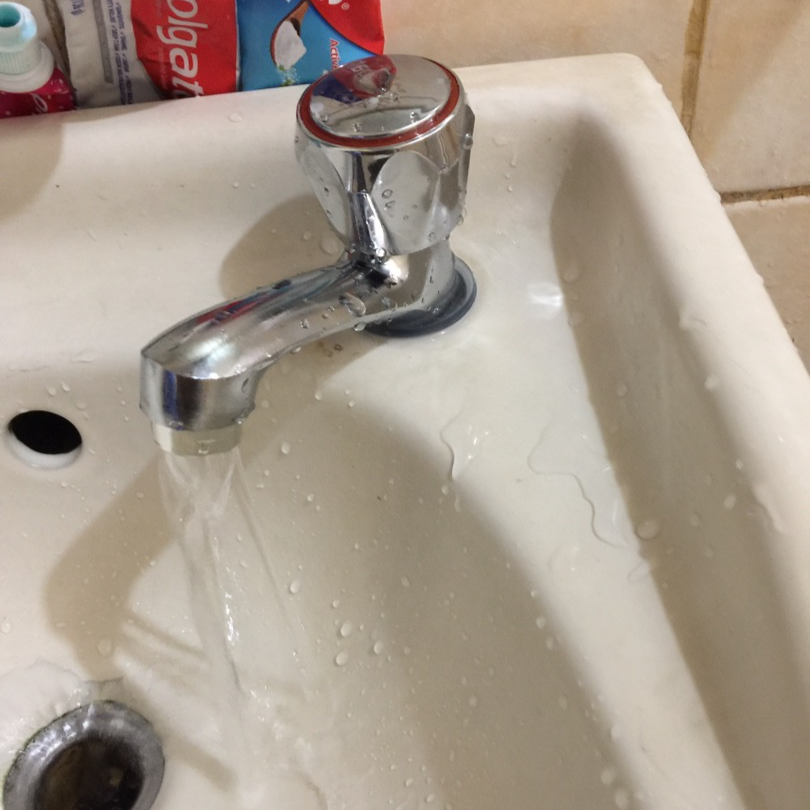This post down below in relation to Why Are My Faucets Dripping (And Can I Fix It Myself)? is particularly entertaining. Read it for your own benefit and figure out what you think of it.

Trickling faucets may feel like a minor trouble, but their effect exceeds just the nuisance of the audio. From drainage to incurring unnecessary financial prices and health risks, disregarding a trickling faucet can lead to various consequences. In this short article, we'll delve into why it's vital to resolve this common family concern immediately and properly.
Wastage of Water
Environmental Effect
Dripping taps add dramatically to water wastage. According to the Epa (EPA), a solitary tap trickling at one drip per secondly can throw away greater than 3,000 gallons of water each year. This not just pressures water resources but additionally influences ecological communities and wildlife dependent on them.
Financial Costs
Enhanced Water Bills
Past the ecological influence, trickling taps can inflate water bills substantially. The built up waste in time translates into greater energy costs, which might have been prevented with timely fixings.
Prospective Residential Or Commercial Property Damage
Moreover, long term leaking can cause harm to components and surfaces surrounding the faucet. Water buildup can cause staining, corrosion, and also architectural issues if left unattended, causing additional repair prices.
Health and wellness Issues
Mold and Mold Growth
The consistent visibility of wetness from a dripping tap produces an optimal environment for mold and mildew and mildew development. These fungis not only endanger indoor air top quality but additionally present health threats, especially for individuals with respiratory system conditions or allergic reactions.
Waterborne Diseases
Stagnant water in dripping faucets can become a breeding place for bacteria and various other pathogens, raising the risk of waterborne conditions. Contaminants such as Legionella microorganisms flourish in stagnant water, possibly resulting in significant diseases when consumed or inhaled.
DIY vs. Professional Repair service
Pros and Cons of Do It Yourself Fixing
While some may attempt to take care of a dripping faucet themselves, do it yourself repairs include their very own set of difficulties. Without correct knowledge and tools, do it yourself efforts can aggravate the issue or cause insufficient repairs, extending the issue.
Advantages of Hiring an Expert Plumber
Employing a specialist plumber ensures that the underlying source of the dripping faucet is attended to properly. Plumbings possess the know-how and tools to diagnose and repair faucet issues efficiently, saving time and minimizing the risk of further damage.
Step-by-Step Guide to Taking Care Of a Dripping Faucet
Devices Needed
Before attempting to fix a leaking tap, collect the essential tools, consisting of an adjustable wrench, screwdrivers, substitute components (such as washing machines or cartridges), and plumber's tape.
Usual Tap Issues and Their Solutions
Identify the kind of faucet and the specific issue causing the drip. Common troubles consist of damaged washers, corroded valve seats, or faulty O-rings. Refer to manufacturer guidelines or on-line tutorials for detailed support on fixings.
Safety nets
Routine Maintenance Tips
To prevent dripping faucets, carry out routine maintenance such as cleaning aerators, inspecting for leakages, and replacing worn-out components without delay. In addition, take into consideration setting up water-saving devices or updating to extra effective fixtures.
Significance of Prompt Repairs
Resolving leaking faucets as quickly as they're discovered prevents additional water wastefulness and prospective damages, eventually saving both water and cash over time.
Impact on Property Worth
Perception of Well-Maintained Property
Preserving a home in good condition, including attending to maintenance problems like dripping taps, enhances its viewed value and charm amongst potential purchasers or tenants.
Influence on Resale Value
Qualities with well-kept plumbing components, including faucets, command higher resale values in the real estate market. Addressing leaking faucets can add to a positive perception during residential property evaluations and settlements.
Environmental Responsibility
Private Payment to Preservation
Taking duty for fixing leaking faucets aligns with broader initiatives toward water conservation and ecological sustainability. Every person's actions jointly make a substantial influence on preserving valuable sources.
Lasting Living Practices
By focusing on timely fixings and taking on water-saving habits, individuals contribute to lasting living techniques that profit both present and future generations.
Verdict
Resolving a dripping faucet exceeds simple comfort; it's a crucial step toward conserving water, decreasing monetary expenses, and securing health and wellness and property. Whether via do it yourself repairs or expert help, doing something about it to take care of leaking taps is a small yet impactful means to advertise accountable stewardship of sources and contribute to a healthier, extra lasting future.
How to Fix a Leaky Faucet: Step-by-Step Repair Guide
A leaky faucet may seem like a simple annoyance, but if it's not fixed promptly, that leak could cost hundreds to potentially thousands. From water damage to mold, mildew, and high water bills, even a tiny leak can be catastrophic if left unattended. Damage like this can even affect the overall value of your home, so it's important to take the right approach for leaky faucet repair. You may need the help of a plumber in some cases, but we've got a few tips you can try on how to fix a leaky faucet before calling the pros.
Four Faucet Types
When you're learning how to fix a leaky faucet, the first step is knowing what kind of faucet you're working with! There are four common types.
Cartridge Faucets
Cartridge faucets come in one- or two-handled varieties. In one-handled cartridge faucets, hot and cold water combines in a single cartridge. In the two-handled versions, hot and cold water are controlled separately and mixed in the faucet.
Ball Faucets
Ball faucets have a single lever you push up and down to adjust the pressure and rotate to change the temperature. A slotted metal ball controls the amount of water allowed into the spout.
Compression Washer Faucets
They're the oldest type of faucet, but they're still used in many homes — especially older ones. Compression faucets have two separate handles that, when turned, raise or lower the washer that seals a water valve. This valve stops water from flowing through the faucet when it is turned off.
Disc Faucets
Disc faucets rarely need to be repaired due to their maintenance-free design. The water flow is controlled by two discs — the upper one raises and lowers against a fixed lower disc, creating a watertight seal. If your disc faucet starts leaking, you may need to replace the seals or clean residue buildup from the inlets.
Fixing a Leaky Faucet
Step 1: Turn Off the Water
Whether you're learning how to fix a leaky bathtub faucet or how to fix a leaky kitchen faucet, always turn off the water supply to your working area when you're fixing a leak. The last thing you want is a flood added to your list of things to fix.
Look for the shutoff valves below your sink or around the tub and turn them clockwise to stop the water flow. If your faucet doesn't have shutoff valves, you may need to turn off the water for the whole house. Check to make sure it's off by turning the faucet on. If nothing comes out, you're ready to start the repair.
Step 2: Take Apart the Faucet
How you disassemble your faucet depends on the type of fixture you have. You can use a flathead screwdriver to remove the caps on top of the handle or handles for cartridge and compression faucets. Inside, you should see handle screws. Unscrew these with a screwdriver to remove the handle.
Disc- and ball-style faucets will typically have an inlet screw near the handle, and removing that will reveal the interior of the faucet.
Detach the Valve Stem
For cartridge- and compression-style faucets, you'll see the inner valve stem or cartridge once you remove the faucet handles. If you have a compression faucet, unscrew the brass valve stem. If you have a cartridge faucet, pull out the cartridge. If your cartridge has been in place for a while, it may require some tools or extra force to remove it due to mineral deposits.
Examine and Replace Parts
Once you've removed the parts, check them out to confirm what needs to be replaced. You may see corroded rubber washers, O-rings, stems, or cartridges. On a ball-style faucet, check the seats and springs for damage.
If you need to repair a leaky disc faucet, check the inlet and seals on the lower disc.
Once you determine what parts must be replaced, visit your local hardware store. Bring the damaged parts with you to ensure you can purchase the correct components to replace them.
Clean Valves and Faucet Cavity
If you've removed a stem or cartridge, you may notice mineral buildup in the faucet's threads. Use white vinegar to clean the valve seat by soaking it for a few minutes, then scrub it away with a soft toothbrush and rinse with warm water. You can also clean the interior of the faucet in the same way.
Reassemble the Faucet
Once your faucet is cleaned and the required parts have been replaced, it's time to reassemble it. Put the pieces back together and slowly turn the water supply back on. Doing this slowly is crucial because too much initial water pressure can damage the new hardware you've just installed.
https://homewarranty.firstam.com/blog/how-to-fix-leaky-faucet

We had been made aware of that report on Why It's Important to Fix Leaky Faucets through someone on a different web page. Do you know anybody else who is fascinated about the subject? Be sure promote it. Thanks for your time invested reading it.